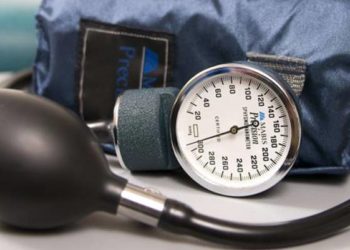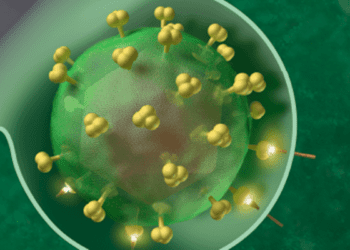2 Minute Medicine Rewind December 28, 2020
1. Among virologically suppressed persons with HIV at moderate risk of cardiovascular disease, daily administration of rosuvastatin did not lead to significant reductions in inflammatory markers.
Evidence Rating Level: 1 (Excellent)
Due to immune dysregulation and chronic inflammation, people with HIV (PWH) have a high burden of cardiovascular disease (CVD) even with optimal antiretroviral therapy. Indeed, elevated IL-6 and hsCRP levels are associated with an increased risk of cardiovascular events. Statins – exerting a myriad of effects on lipids and inflammation – have been shown to be effective at reducing the risk of cardiovascular events and all-cause mortality among individuals at high risk of CVD. As such, this randomized, placebo-controlled trial of rosuvastatin explored whether virologically suppressed PWH would benefit from therapy at a lower CVD risk than currently recommended, in this instance those at moderate risk. 20 mg of rosuvastatin were administered daily to the 33 patients in the intervention cohort (median age = 54 years, 97.0% male) for 48 weeks, while 36 patients received a placebo (median age = 55 years, 100% male). Though administration of rosuvastatin was found to significantly decrease LDL, LDL/HDL, and total cholesterol levels when compared with placebo, serum levels of inflammatory markers, including IL-6, sTNFR-II, CXCL10, sVCAM-1, and sCD14, were not found to be significantly different. Among the intervention cohort, however, there was found to be small but significant increases in the proportion of intermediate (+1.3%, p = 0.02) and non-classical (+1.2%, p = 0.049) monocytes, with a resulting decrease in the proportion of classical monocytes (-3.3%, p = 0.003). In all, this study showed that PWH at moderate risk of CVD do not benefit from statin therapy to target reductions in chronic inflammation. Though the sample size was small and homogeneous, this study adds to the discussion surrounding statin use in PWH.
1. COVID-19 infected patients were found to be at an increased risk of postoperative pulmonary and septic complications compared with a matched, non-infected cohort.
Evidence Level Rating: 2 (Good)
Numerous reports have indicated high rates of significant post-operative complications among COVID-19 positive patients. Given the magnitude and severity of the ongoing pandemic, this propensity-matched analysis making use of the U.S. Veterans Health Administration (VA) records evaluated the contribution of COVID-19 infection to adverse postoperative outcomes, which may be used to inform decision making moving forward. The four primary outcomes were measured over 30 days and included mortality, readmission, reoperation, and hospital length of stay (LOS). Propensity matching resulted in final cohorts of 432 COVID-19 positive (mean [SD] age = 65.1 [12.7] years, 92.1% male) and 1,256 negative (mean [SD] age = 64.8 [12.3] years, 93.2% male) patients. After matching, COVID-19 positive patients demonstrated significantly longer median LOS (7 vs. 5 days, p < 0.001), but did not demonstrate a higher risk of mortality, reoperation, or readmission. However, it was found that infected patients had higher 30-day rates of pneumonia (20.6% vs. 6.0%, p < 0.001), postoperative mechanical ventilation (7.6% vs. 4.1%, p = 0.01), and ARDS (17.1% vs. 6.8%, p < 0.001). Furthermore, infected patients had higher rates of septic shock (13.7% vs. 6.8%, p < 0.001) and ischemic stroke (5.8% vs. 2.9%, p = 0.01). While propensity matching cannot control for all variables, COVID-19 positive patients undergoing surgery were found to be at an increased risk of pulmonary and septic complications in the postoperative period. These data underscore the importance of preprocedural screening for COVID-19 infection and suggest delaying surgery up to or beyond 30 days for patients with a high burden of risk.
1. Among patients with severe chronic kidney disease requiring an arteriovenous fistula for hemodialysis, abnormal digital-brachial index was found to be predictive of fistula patency.
Evidence Level Rating: 2 (Good)
Some patients with advanced chronic kidney disease (CKD) may require renal replacement therapies like hemodialysis (HD), at which point creation and maintenance of an arteriovenous fistula (AVF) is of great importance. AVF patency is often challenging, and repeated attempts to maintain it are burdensome to both the patient and the health care system. The purpose of this retrospective study was to determine whether the digital-brachial index (DBI) – the systolic pressure of a finger divided by the systolic pressure of the brachial artery – was associated with AVF patency at two years. 163 patients (mean [SD] age = 71 [12] years, 42% female) with CKD stage 4 or 5 were included, with 80 patients receiving a wrist-based AVF and 83 receiving an elbow-based AVF. The mean preoperative DBI was 98±18%; 67 patients had a normal DBI of 80-99%, 22 a low DBI of < 80%, and 74 a high DBI of ≥ 100%. One- and two-year primary patency rates were found to be 43±4% and 35±4%, respectively. Furthermore, the groups with abnormal DBIs were found to have the lowest rate of primary patency (low DBI 25±11%, high DBI 28±6%, normal DBI 49±8%, p = 0.018). After controlling for variables like age, sex, hypertension, diabetes mellitus, and smoking status, abnormal DBI values were the only independent predictors of primary patency (low DBI: HR 2.25, 95% CI 1.13 to 4.48, p = 0.022; high DBI: HR 1.74, 95% CI 1.06 to 2.85, p = 0.029). In all, this study suggests that abnormal DBI is an independent predictor of AVF patency among patients with severe CKD. DBI measurement, therefore, might have a role in pre- and post-procedural counseling and in predicting AVF prognosis among select patients.
1. For the treatment of acute pain in the emergency setting, 0.15 mg/kg IV ketamine was shown to be non-inferior to a higher dose of 0.3 mg/kg.
Evidence Level Rating: 1 (Excellent)
The opiate crisis has led many providers to search for new agents for analgesia; one such agent is ketamine, an N-methyl-D-aspartate (NMDA) glutamate receptor antagonist with analgesic properties. The most commonly used dose is 0.3 mg/kg IV, and carries with it side effects like dizziness, disorientation, and a “feeling of unreality.” This double-blinded, randomized, non-inferiority trial compared administration of 0.15 mg/kg IV with 0.3 mg/kg IV for analgesia at 30 minutes as measured by the 11-point NRS pain score. A previous, similar study determined the non-inferiority margin to be the minimally clinically relevant difference (δ=1.3), with the low dose being non-inferior if the lower limit of the 95% CI for the difference in mean NRS score after 30 minutes exceeded –𝛿0 = -1.3. 98 patients were enrolled in the emergency setting, 49 in the low dose cohort (mean [SD] age = 39 years, 39% male) and 49 in the high dose cohort (mean age = 37 years, 45% male). After 30 minutes, the unadjusted mean NRS score was 5.0 and 4.7 in the low and high dose cohorts, respectively. The mean NRS score difference was -0.3 (95% CI -1.6 to 1.0); thus, the non-inferiority of the low dose was confirmed. Furthermore, the incidence of hearing changes, mood alteration, and hallucinations was significantly higher in the high dose cohort early after administration, though these differences were no longer apparent at 30 minutes. In all, this study did not detect an appreciable difference in analgesia or side effect profile between 0.15 mg/kg and 0.3 mg/kg IV ketamine for treatment of acute pain in the emergency setting. This lower dose should therefore be considered over the higher dose for analgesia in the emergency department.
1. Plasma concentration of homocysteine was found to not be associated with incident stroke in a case-control, nested study.
2. Both methionine concentration and methionine to homocysteine ratio were associated with a lower risk of incident stoke.
Evidence Level Rating: 2 (Good)
Stroke is a leading cause of morbidity and mortality worldwide, and homocysteine, formed from the metabolism of methionine, has been recognized as the major sulfur-containing amino acid linked to cardiovascular disease, including stroke, though the pathogenesis is somewhat unclear. Furthermore, due to the relationship between homocysteine and other sulfur-containing compounds, there is a risk of confounding variables. This nested case-control study of the EPIC (European Prospective Investigation Into Cancer and Nutrition)-Norfolk study examined the association of plasma concentration of individual sulfur-containing compounds as well as the ratio of methionine to homocysteine – which represents the activity of one-carbon metabolism – with the incidence of stroke. From the original EPIC-Norfolk study (n = 25,639), 480 cerebrovascular disease cases (mean [SD] age = 67.4 [7.3] years, 52.3% female) and 480 matched controls (mean [SD] age = 67.2 [7.3] years, 52.3% female) were evaluated. It was found that higher plasma concentrations of homocysteine were significantly associated with incident stroke; this associated, though, was attenuated after adjustment. In contrast, higher plasma concentrations of methionine and a higher methionine to homocysteine ratio were both associated with a lower risk of incident stroke, with odds ratios per 1 SD of 0.83 (95% CI 0.72 to 0.96) and 0.82 (95% CI 0.71 to 0.95), respectively. This association persisted after adjusting for homocysteine and other potential variables like lipid levels and blood pressure. Other sulfur-containing compounds like cystathionine, cysteine, glutathione, and taurine were not associated with a risk of stroke. In all, though the plasma concentration of homocysteine was not found to be associated with incident stroke, there may be a potential role for methionine in the prevention of cerebrovascular disease.
Image: PD
©2020 2 Minute Medicine, Inc. All rights reserved. No works may be reproduced without expressed written consent from 2 Minute Medicine, Inc. Inquire about licensing here. No article should be construed as medical advice and is not intended as such by the authors or by 2 Minute Medicine, Inc.







